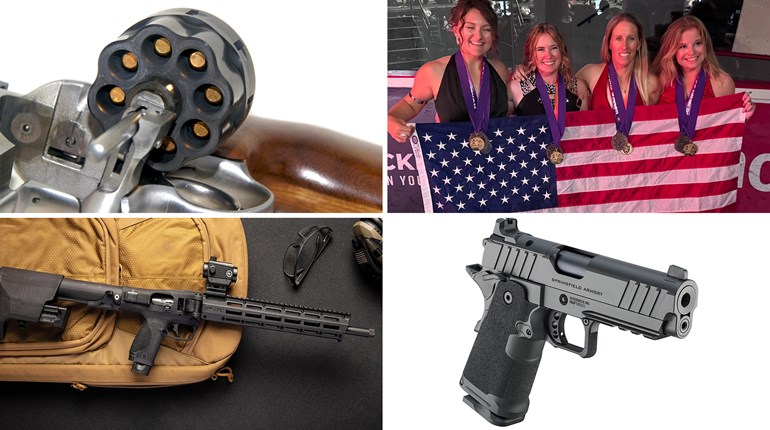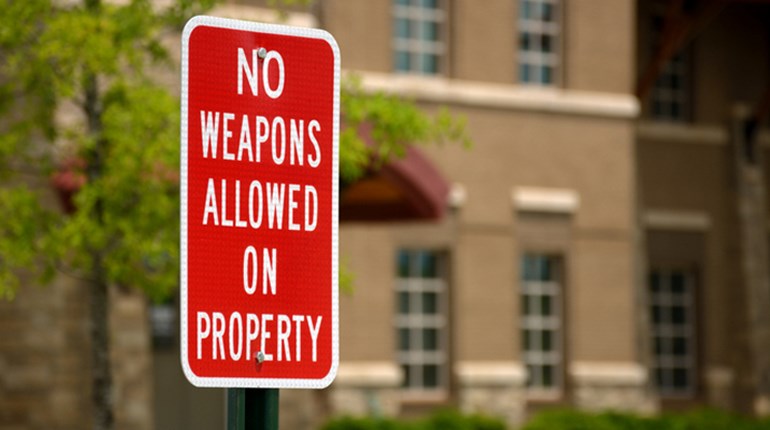
Not so long ago, mentioning a handgun chambered in .380 ACP amongst your knowledgeable shooting buddies would have been greeted with sneers. But despite the naysayers of a decade ago, the family of mild .380 ACP handguns offers certain advantages. It can be made smaller than a 9 mm, operates at lower pressure levels allowing lighter-weight guns and generates a level of recoil that intimidates practically no one.
The approach for semi-automatic .380s is to make them as small as possible for concealed carry which, in turn, makes them more difficult to shoot accurately. In revolvers, the gun can be the same size as that American icon, the 2-inch barreled snubnose. The negative aspect of the revolver version is the mandatory use of moon clips. Enter the Pit Bull revolver from Charter Arms.
My big surprise upon first seeing the company’s .380 ACP Pit Bull was the revolver’s size. The barrel was 3 inches in length instead of the expected 2, it held six rounds instead of five, and the grips were full size (or Combat-size), black neoprene with three finger grooves.
First impressions, right or wrong, were that the gun was too large for typical pocket carry, but would be much easier to master than a smaller revolver with barrel and grips downsized for concealment. It has a hammer, which I like on a revolver that will not be carried in a pocket simply because, when time allows, it gives you the option of a single-action trigger pull of slightly more than 3 pounds or a double-action trigger pull more than 11. Additionally, both front and rear sights have 90-degree corners presenting the kind of sight picture used in bullseye shooting.

The Pit Bull performed well on the range. Perhaps equally important, the gun makes practice a pleasure, particularly for a new shooter. The ammunition tested shot 2 to 4 inches lower than my point-of-aim, but it is capable of making fight-stopping head shots at a range commensurate with your skill level.
Like all double-action revolvers built to shoot rimless ammunition, there are issues in the loading/reloading process. Using conventional moon clips, there is no tactical or partial reload. All rounds, fired or not, come out of the gun at once. Unlike other manufacturers, Charter does not use moon clips to lock all five or six rounds together, thus dictating simultaneous ejection of all empties.
The Pit Bull’s extractor plate has a small individual spring-loaded metal extractor that protrudes into each chamber and locks in under the “rimless rim” of the .380 ACP round, allowing the fired (and unfired) cases to be pushed out of the cylinder.

To load the revolver, each round must be pushed laterally against the small extractor opening the full diameter of each chamber so the round can be inserted. Because the spring-loaded extractor is pressing the empty case against the outside wall of each chamber, empties cannot fall clear until the case mouths clear the chamber walls, at which time the empties fall sideways from the cylinder. Occasionally in testing, one or two empty cases closest to the Pit Bull’s frame were trapped against the frame and could not fall free.
It is possible to perform a partial reload of the Pit Bull, but the individual chamber-retention device that negates the use of moon clips makes this a bit difficult. By that I mean it will require the use of fine-motor skills as opposed to the simpler, more reliable gross-motor skills used in reloading a semi-automatic or, to a lesser degree, a revolver with a speedloader. When your blood pressure and adrenaline levels are off the medical charts, fine-motor skills are hard to come by.
The Pit Bull .380 gives you six rounds of legitimate (though at the low end of the scale) self-defense ammo and has the capability to place those shots precisely where you want them at the kind of engagement ranges you’re most likely to encounter in the real world.






































